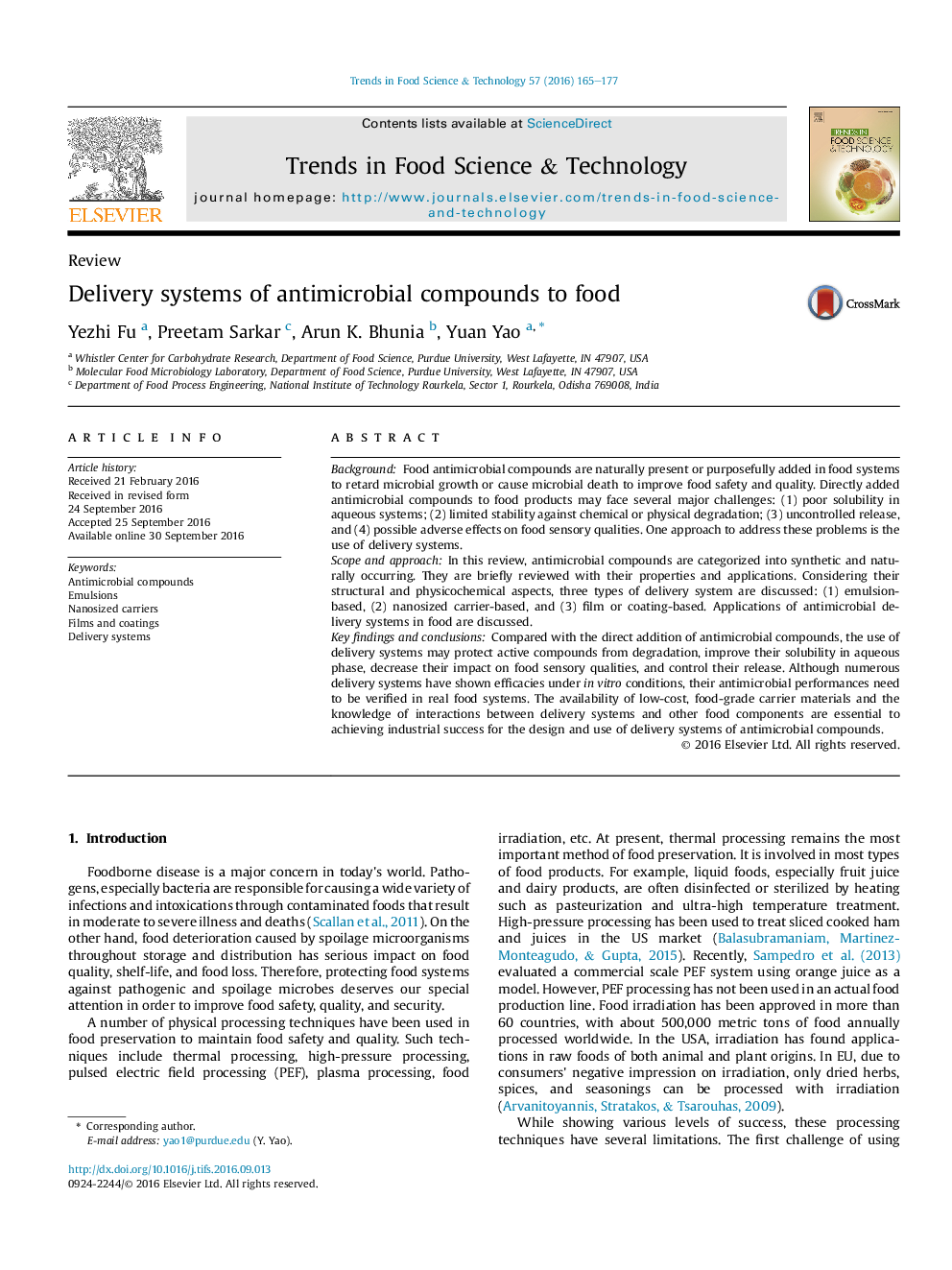| Article ID | Journal | Published Year | Pages | File Type |
|---|---|---|---|---|
| 5523854 | Trends in Food Science & Technology | 2016 | 13 Pages |
•Antimicrobial compounds used in the food industry are discussed in 2 groups: synthetic and naturally occurring.•Delivery systems are discussed in 3 groups: emulsion-based, nanosized carrier-based, and film or coating-based.•Delivery systems may protect active compounds from degradation, improve their solubility, and control their release.•Performances of antimicrobial delivery systems in culture medium-based models and food systems are discussed.
BackgroundFood antimicrobial compounds are naturally present or purposefully added in food systems to retard microbial growth or cause microbial death to improve food safety and quality. Directly added antimicrobial compounds to food products may face several major challenges: (1) poor solubility in aqueous systems; (2) limited stability against chemical or physical degradation; (3) uncontrolled release, and (4) possible adverse effects on food sensory qualities. One approach to address these problems is the use of delivery systems.Scope and approachIn this review, antimicrobial compounds are categorized into synthetic and naturally occurring. They are briefly reviewed with their properties and applications. Considering their structural and physicochemical aspects, three types of delivery system are discussed: (1) emulsion-based, (2) nanosized carrier-based, and (3) film or coating-based. Applications of antimicrobial delivery systems in food are discussed.Key findings and conclusionsCompared with the direct addition of antimicrobial compounds, the use of delivery systems may protect active compounds from degradation, improve their solubility in aqueous phase, decrease their impact on food sensory qualities, and control their release. Although numerous delivery systems have shown efficacies under in vitro conditions, their antimicrobial performances need to be verified in real food systems. The availability of low-cost, food-grade carrier materials and the knowledge of interactions between delivery systems and other food components are essential to achieving industrial success for the design and use of delivery systems of antimicrobial compounds.
